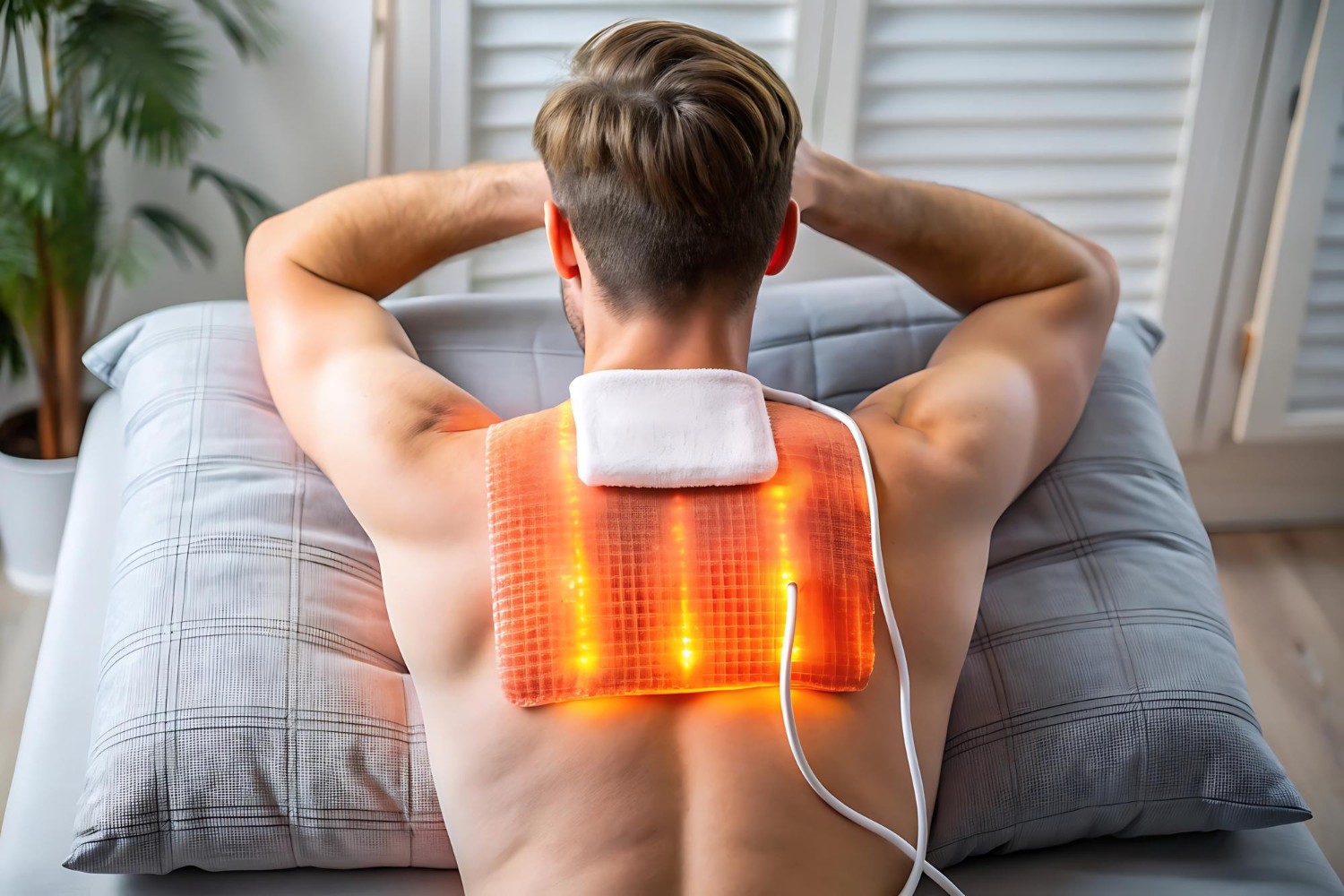The Science Behind Heat Therapy for Pain Relief


Ever sink into a warm bath after a tough day and feel your aches melt away? Or grab a heating pad for that nagging back pain and sigh with relief? You’re tapping into heat therapy, a time-tested way to ease pain that’s backed by science. Known as thermotherapy, it’s not just about feeling cozy—it’s a proven method to soothe chronic pain, stiff joints, or sore muscles. Whether you’re recovering from a workout or managing arthritis, understanding how heat works can make you a pro at using it. Let’s break down the science behind heat therapy for pain relief, when it’s best to use it, and simple ways to apply it safely at home. Ready to warm up to natural relief?
How Science Behind Heat Therapy Soothes Your Body


Boosting Blood Flow
When you apply heat, your blood vessels widen (called vasodilation), ramping up blood flow. This rush delivers oxygen and oxygen-rich nutrients to sore spots, helping tissues heal. It also sweeps away waste like lactic acid, which can make muscles ache. A 2018 Journal of Applied Physiology found heat can boost local blood flow by up to 50%, speeding recovery.
Relaxing Tight Muscles
Heat is like a lullaby for tense muscles. It loosens spasms, eases stiffness, and makes tissues more stretchy, per a 2019 Physical Therapy study. This is why a warm compress feels so good on a stiff neck—it tells your muscles to chill out.
Blocking Pain Signals
Heat therapy plays tricks on pain through the gate control theory Warmth activates skin temperature sensors that compete with pain signals heading to your brain, reducing how much pain you feel. It’s like drowning out noise with soothing music. A 2020 Pain Medicine study showed heat can cut pain perception by 20–30%.
Speeding Up Tissue Repair
More blood flow means faster healing. Heat revs up your body’s repair crew, delivering nutrients and boosting cell activity to mend damaged areas quicker. This makes it great for chronic issues, not just quick relief.
Types of Heat Therapy: Pick Your Warmth
Dry Heat: Easy and Steady
Dry heat, like heating pads or hot water bottles, is simple and pulls moisture from the skin.
- Examples: Electric heating pads, gel packs, heat wraps, saunas.
- Best for: Chronic aches, like lower back pain or menstrual cramps, needing steady warmth.
It’s user-friendly, with adjustable settings, but can dry skin if overused.
Moist Heat: Deep and Hydrating
Moist heat, like hot baths or steamed towels, adds humidity and sinks deeper into muscles.
- Examples: Showers, hydrocollator packs, paraffin wax dips.
- Best for: Arthritis or joint pain needing deep relief.
A 2019 Journal of Physical Medicine and Rehabilitation noted moist heat reaches 20–25% deeper than dry heat, making it ideal for joints.
Infrared Heat: Modern and Penetrating
Infrared heat uses light waves to warm tissues below the skin, feeling less intense on the surface.
- Examples: Infrared pads, saunas.
- Best for: Deep pain, like fibromyalgia.
A 2021 Journal of Pain Research study found infrared reduced chronic pain by 15% more than traditional heat in some cases.
When to Use Heat (and When to Skip It)
Best Times for Heat Therapy
Heat shines for:
- Chronic pain (e.g., arthritis, fibromyalgia)
- Muscle stiffness or spasms
- Joint aches, like morning stiffness
- Menstrual cramps
- Pre-workout warm-ups
It’s perfect when pain’s been around a while and there’s no swelling.
When to Avoid Heat
Skip heat for:
- Fresh injuries (first 48–72 hours)
- Swollen, red, or hot areas
- Open wounds or stitches
- Numb skin (you might not feel burns)
- Conditions like MS or diabetes (check with a doctor)
If it’s puffy or fresh, grab ice instead—heat can worsen inflammation.
Heat vs. Cold: Quick Guide
- Heat: Chronic, stiff, achy pain.
- Cold: New injuries, swelling, redness.
- Both: Alternate for arthritis—10 minutes cold, 30-minute break, 15 minutes heat.
5 Tips for Safe Heat Therapy at Home
1. Keep It Warm, Not Hot
Aim for 104–113°F (40–45°C)—think cozy, not scalding.
Test heat sources on your forearm first.
Why: Too-hot heat risks burns, per a 2020 Burns Journal study.
2. Time It Right
Use for 15–20 minutes, 2–3 times daily.
Let skin cool between sessions.
Why: Longer can irritate skin, per a 2019 Physical Therapy in Sport study.
3. Use a Barrier
Wrap heat sources in a towel to protect skin.
Check skin every 5 minutes for redness.
Why: Direct heat can burn, especially on sensitive areas.
4. Stay Hydrated
Drink water before and after, especially for baths or saunas.
Why: Heat causes sweating, risking dehydration.
5. DIY Heat Hacks
Rice Sock: Microwave a rice-filled sock for 1–2 minutes.
Towel Compress: Soak a towel in hot water, wring, and apply.
Why: These are cheap and mold to your body.
Pairing Heat with Other Relief
Heat works even better with:
- Stretching: Warm muscles stretch easier, per a 2018 Journal of Sports Sciences study.
- Massage: Heat preps muscles for deeper relief.
- Meds: Pair with over-the-counter pain relievers (ask your doc).
- Mindfulness: Use heat during deep breathing for extra calm.
A 2020 Journal of Clinical Medicine study found heat plus stretching cut back pain by 35% more than either alone.
Conclusion: Warm Your Way to Relief
Heat therapy is a science-backed gem for pain relief, easing chronic aches with increased blood flow, relaxed muscles, and blocked pain signals. Whether you love a steamy bath, a trusty heating pad, or a high-tech infrared wrap, there’s a method for you. Stick to 15–20 minutes at 104–113°F, use a towel barrier, and skip heat for new injuries or if you have certain health conditions. Try a rice sock or warm towel today to feel the difference. Combine with stretching or relaxation for even better results. Heat’s simple, natural, and powerful—your body will thank you for the warmth!
Recent Posts
Mindful Eating: Transform Your Relationship with Food
Have you ever finished a meal and realized you barely tasted it? Or grabbed a…
Top 10 Skincare Ingredients to Avoid During Pregnancy
Pregnancy is a time of significant change—not just physically, but also for your skin. Hormonal…
Reclaim Your Body’s Balance: A 30-Day Hormone Reset Plan
Are you looking for simple ways to reclaim your body’s balance, boost your mood, increase…
Your Skin Changes With Your Cycle – Here’s How to Care for It Each Week
Introduction: Your Skin’s Monthly Dance Ever wonder why your skin glows one week, then breaks…
Postpartum Recovery – Foods That Heal & Support Hormonal Balance
Congratulations, mama you’ve just brought a beautiful baby into the world! While you’re showering your…
Healing After Baby: The Gut-Brain Axis and Postpartum Mood
Introduction: Your Body, Your Mind, Your New Journey Welcoming your baby is a whirlwind of…

